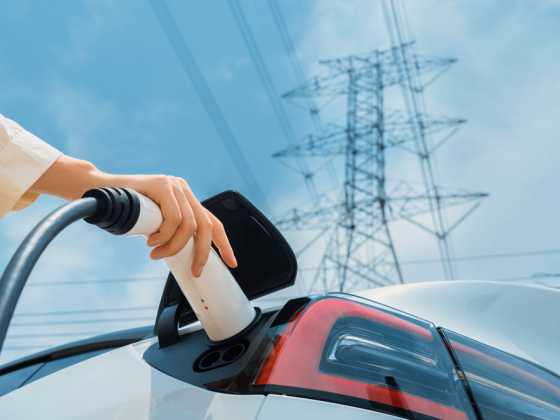The principles of choosing a greener fleet
You understand the business and ethical case for greening your fleet, but where do you start? Ian Featherstone, the Energy Saving Trust's fleet advice manager, explains the process
 Years ago, running a company fleet seemed so easy. The bosses got nice BMWs or Mercedes. Range Rovers if they wanted to stand out. The salespeople wanted BMW or Mercedes, but got Ford saloons. And middle managers drove bigger Fords or smaller BMWs and spent their time plotting how to get a promotion so they could have a GL instead of an L. Nobody bothered much about carbon emissions or the environment, or even fuel efficiency or leasing costs. It was all about status or, at best, about getting the job done, rather than any consideration for the environment.
Years ago, running a company fleet seemed so easy. The bosses got nice BMWs or Mercedes. Range Rovers if they wanted to stand out. The salespeople wanted BMW or Mercedes, but got Ford saloons. And middle managers drove bigger Fords or smaller BMWs and spent their time plotting how to get a promotion so they could have a GL instead of an L. Nobody bothered much about carbon emissions or the environment, or even fuel efficiency or leasing costs. It was all about status or, at best, about getting the job done, rather than any consideration for the environment.
How things have changed. Running a fleet has always been expensive, but today finance directors and business owners are much more forensic in their approach to assessing the impact of fleet vehicles. Environmental considerations are at the top of the agenda too, not least because regulations from both the UK government and the EU have tipped the financial balance in favour of low-emitting cars. Many company car drivers may still have an eye on status, but increasingly employees and customers want to know that organisations are not willfully ignoring environmental considerations when they make fleet decisions.
The good news is that the motor industry has invested considerably so that companies and their drivers benefit. Almost all manufacturers produce lower emission vehicles that will be at home in any fleet. In fact, the choice is so large and advances so frequent that it takes some keeping up with.
A review of the fleet
Very few companies have made no attempt to consider the environmental impact of their fleet, because it is so inextricably linked with expenditure. The issue today is not getting started on greening the fleet, but on making continuous improvements. The basic green fleet principle is unchanged: to minimise cost and maximise efficiency. But improvement requires data.
It’s surprising how little information some companies hold about their existing fleet. It should go without saying that employers will know what vehicles they own or lease and which employees use them. But often they won’t know exactly what the vehicles are used for – the kind of journeys that are being made, which routes are planned (or often, not planned), how far the average journey is and so on. For many, the most significant data is contained on expense claim forms, and that is usually limited to total monthly mileage.
The biggest omission is usually the impact of the grey fleet, which are typically older, less well-maintained cars that emit higher levels of carbon than their fleet equivalents. Employers need to insist on higher grey fleet standards. Employees who choose a cash option instead of a company car can’t complain when similar rules apply to the vehicles they drive as they do to company cars, including age limits on the vehicles. Allowances are intended to fund an equivalent vehicle, so drivers should not be surprised that limits are set. Assigning responsibility for the grey fleet is the first step in managing it.
Slashing the fuel bill
Fuel management can almost always be improved. One way is to drive less, which means looking at journeys, improving route planning, or introducing telematics.
Another way is to examine how employees pay for fuel. If you allow staff to add private fuel onto their company fuel cards, believing it to be an employee perk, it’s almost certainly costing the organisation and the employee money as the tax is often higher than the cost of the fuel the employee receives in kind. It also encourages negative driver behavior: why use less fuel when the perception is that it’s being paid for?
However, withdrawing the (perceived) benefit of free fuel may not go down well – some basic rate taxpayers who drive a relatively high number of private miles might be out of pocket. But the cost of compensating employees so that they don’t lose out is almost always cheaper than providing free fuel itself.
Some organisations wrongly assume fuel cards for their car fleet means paying for private mileage; this is not the case. The undoubted benefits of fuel cards should be linked to a simple calculation rewarding those drivers who reduce their fuel bill through better driving and choice of filling station. Here’s the maths: Divide a driver’s monthly fuel bill by the number of miles driven to reach a ‘pence per mile’ cost. Then multiply this figure by the driver’s private mileage to determine the amount to be deducted from salary. This incentivises drivers to avoid expensive filling stations – at motorway service stations, say, drive more economically and, when the time comes, to choose a more economical car come replacement time.
So although greener vehicles are more economical vehicles, which means lower fuel bills, it doesn’t automatically mean lower total costs. That’s because fuel is just one element in the calculation of whole-life costs. Many organisations haven’t cottoned on to this calculation, preferring instead to look at the initial purchase or monthly lease cost and miles per gallon. Whole life costs, however, take fuel economy and tax into account and should be based on your typical replacement cycle and mileage.
Encouraging a greener choice
When it comes to selecting vehicles for the fleet list, organisations have policy decisions to make. Should they restrict the choice that employees can make, or allow a free-for-all and instead try to influence decisions so that a green choice seems (and indeed is) the natural choice?
No one likes to be pressurised into selecting a car they’re going to be unhappy driving for years to come. So it makes sense to keep employees on side by providing a wide selection of appropriate vehicles. The tax system already incentivises a greener choice. Companies could add incentives of their own, perhaps by increasing the lease allowance (or even make a bonus payment) for low-emitting cars (see box). There are pitfalls. Some families may need an MPV. A blanket ban on such vehicles might not go down well, but directing people to the most efficient MPVs could work. Employees should also be aware that their choice affects their benefit in kind liabilities. By choosing a high-emitting car, they choose to pay more tax – and more for their private fuel use. Such knowledge helps focus the mind.
Don’t forget the vans
Here’s a basic question for organisations that rely on a van fleet: do you really need vehicles so large? Many fleets have improved their green credentials and saved money by reviewing their real needs and downsizing. For example, a check on which tools and spare parts are needed on most engineer visits could reveal that different racking options or side load doors may make a smaller vehicle practical.
Speed limiters are proven energy savers and are often factory-fitted options. Ford’s data demonstrates that a Transit 260 or 280 van with a standard roof height used 19 per cent less fuel at 60mph than 70mph, and at 65mph the reduction in fuel consumption was still ten per cent. Drivers report much less stress and little noticeable different in reaching jobs on time.
Telematics can improve route and work scheduling and cut mileage. A good system can be invaluable for monitoring driver behavior. Alerts for speeding, rapid acceleration and deceleration can help manage and encourage safer, more fuel-efficient driving styles. However, some organisations under-utilise telematics systems: resources must be made available and staff fully trained to exploit the management data provided by the system.
Where to turn
Just when you think you’ve got to grips with the complexities of environmental fleet management (and some of it is complex, although much is common sense) something changes somewhere. A tax rule. A manufacturer’s initiative. An environmental regulation.
The Energy Saving Trust keeps abreast of all the changes in the industry and offers free Green Fleet Reviews. Alternatively, we’re on hand simply to answer any queries organisations may have about their fleets. You can be assured that, whenever there’s a change that affects fleet, we’ll know about it.
FOR MORE INFORMATION
Tel: 0845 602 1425
www.energysavingtrust.org.uk/fleet






